Abstract
1. Glucagon (0-05 or 0-5 microng/kg. min) was infused into a mesenteric artery of a canine ileal segment from which transport was measured (direct infusion) or into a mesenteric artery of an adjacent non-perfused segment (indirect infusion). Unidirectional Na and H2O fluxes and arterial and mesenteric vein pressures and total and absorptive site blood flows were measured. 2. Direct glucagon infusion increased the absorptive and secretory fluxes of Na and H2O and absorptive site blood flow, and decreased absorptive site resistance and arterial and mesenteric vein pressure. Indirect glucagon infusion had the opposite effects. 3. Neither the direct arterial infusion of histamine (0-1-53 microng/kg. min) nor the I.V. infusion of glucose (0-2 g/min) or insulin (0-1 micron/kg) or glucose plus insulin, mimicked the effects of glucagon. 4. The unidirectional secretory and absorptive fluxes of both Na and H2O were linearly related to the calculated capillary pressure during glucagon infusion. 5. It was concluded that the effects of glucagon on gut transport were due to effects exerted through the cardiovascular system.
Full text
PDF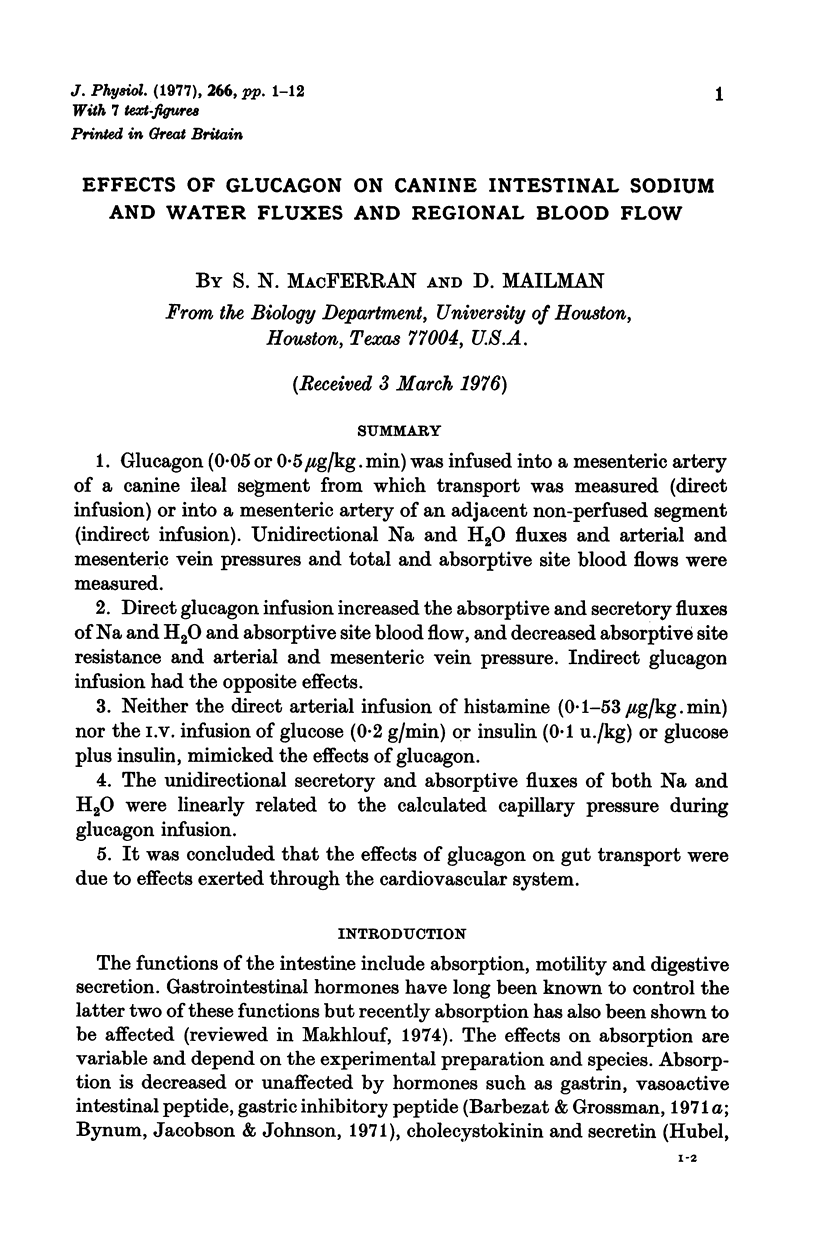
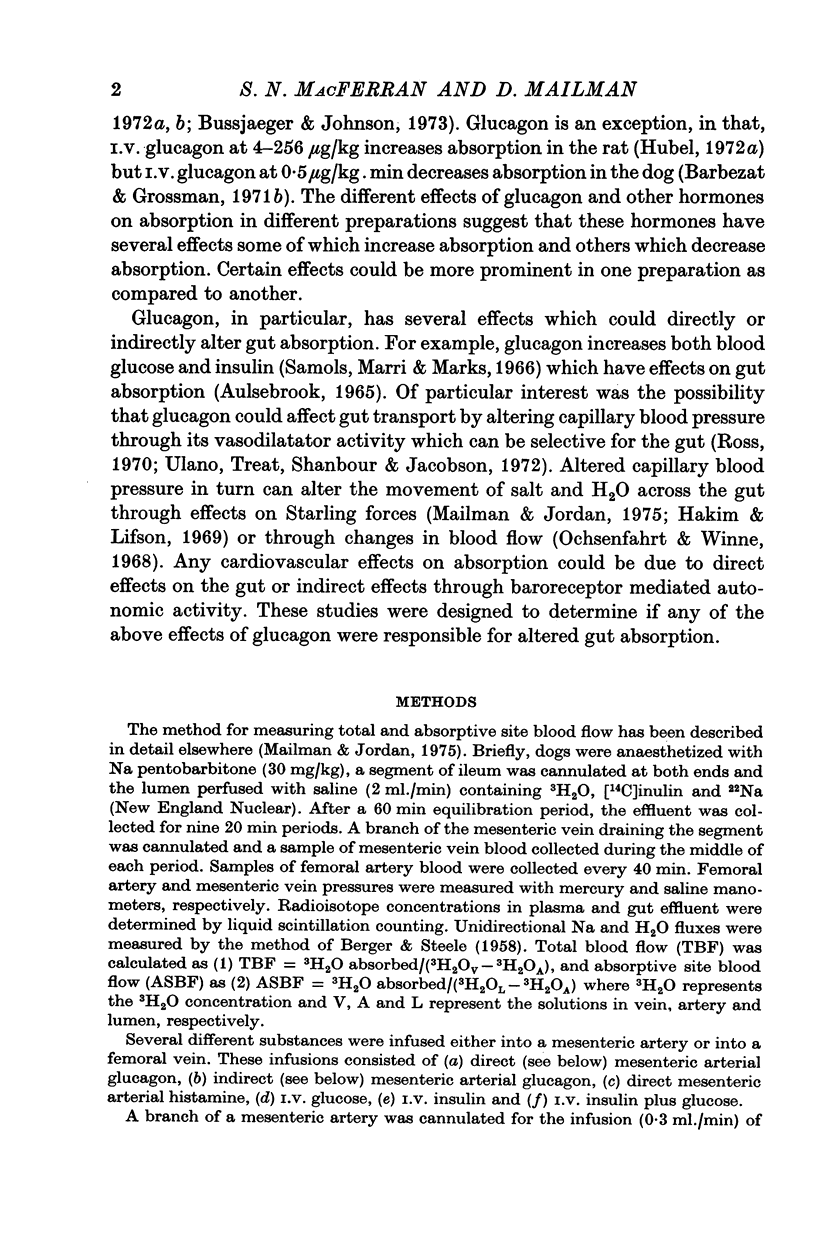
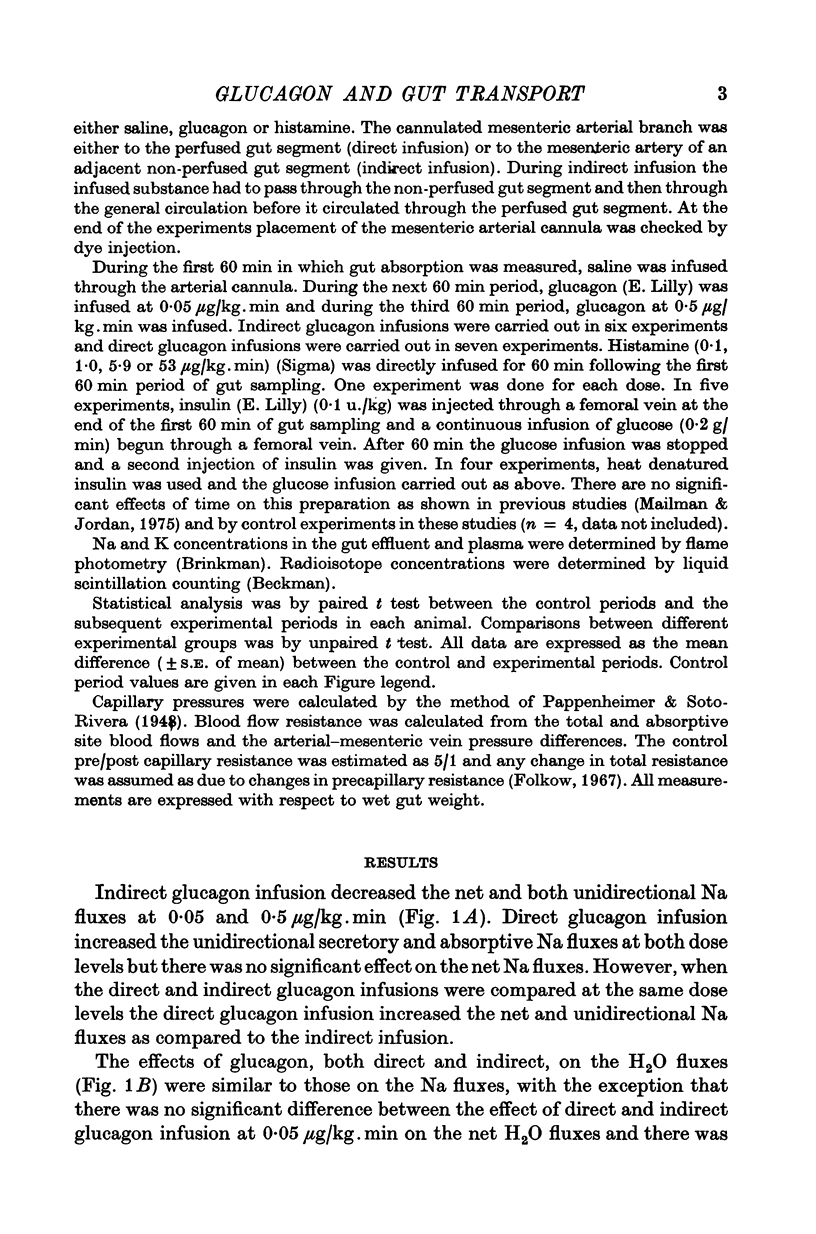
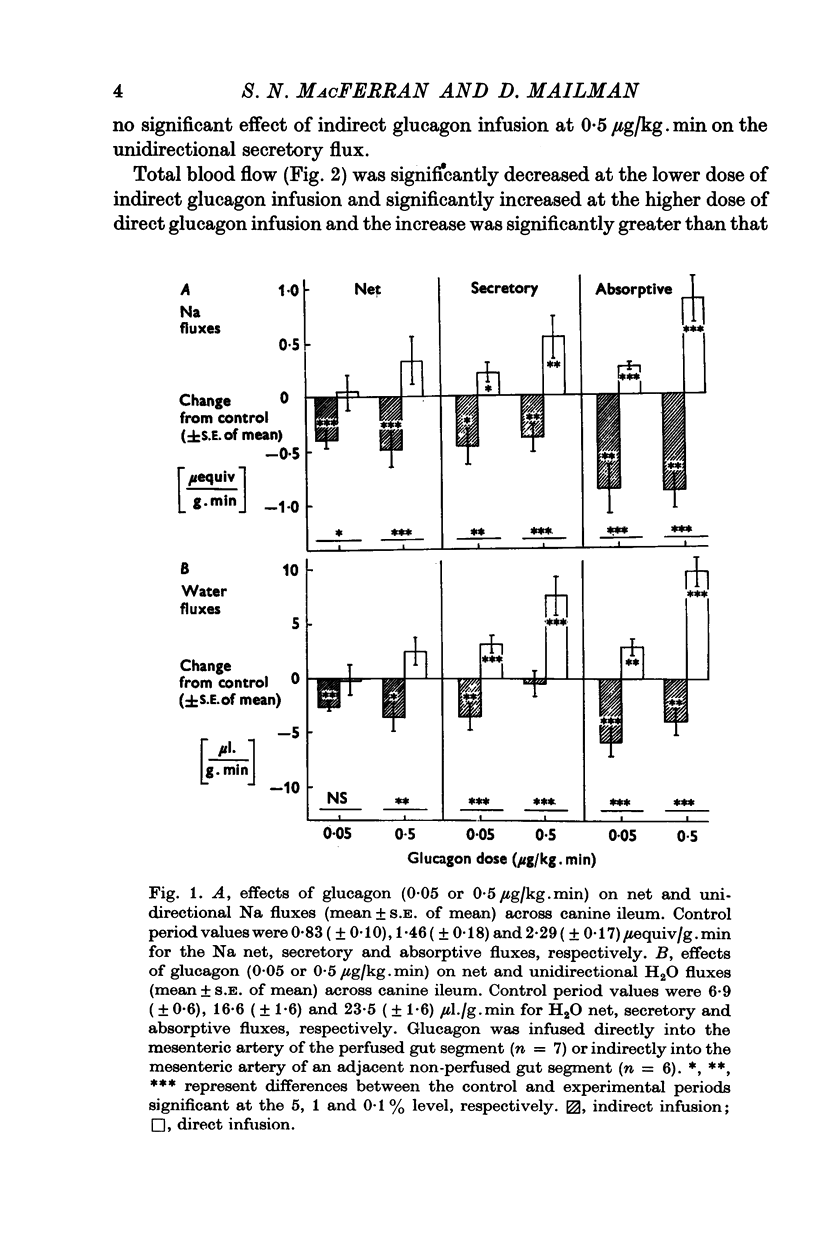
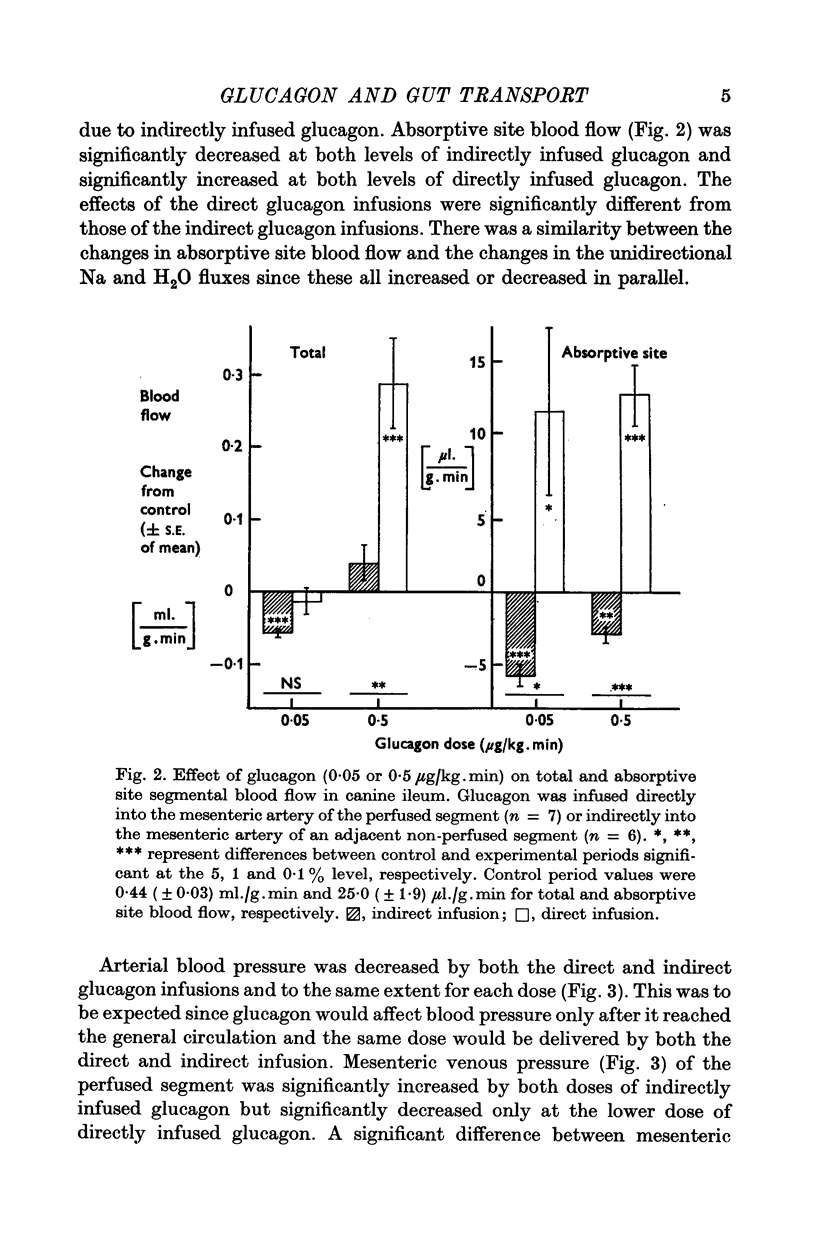
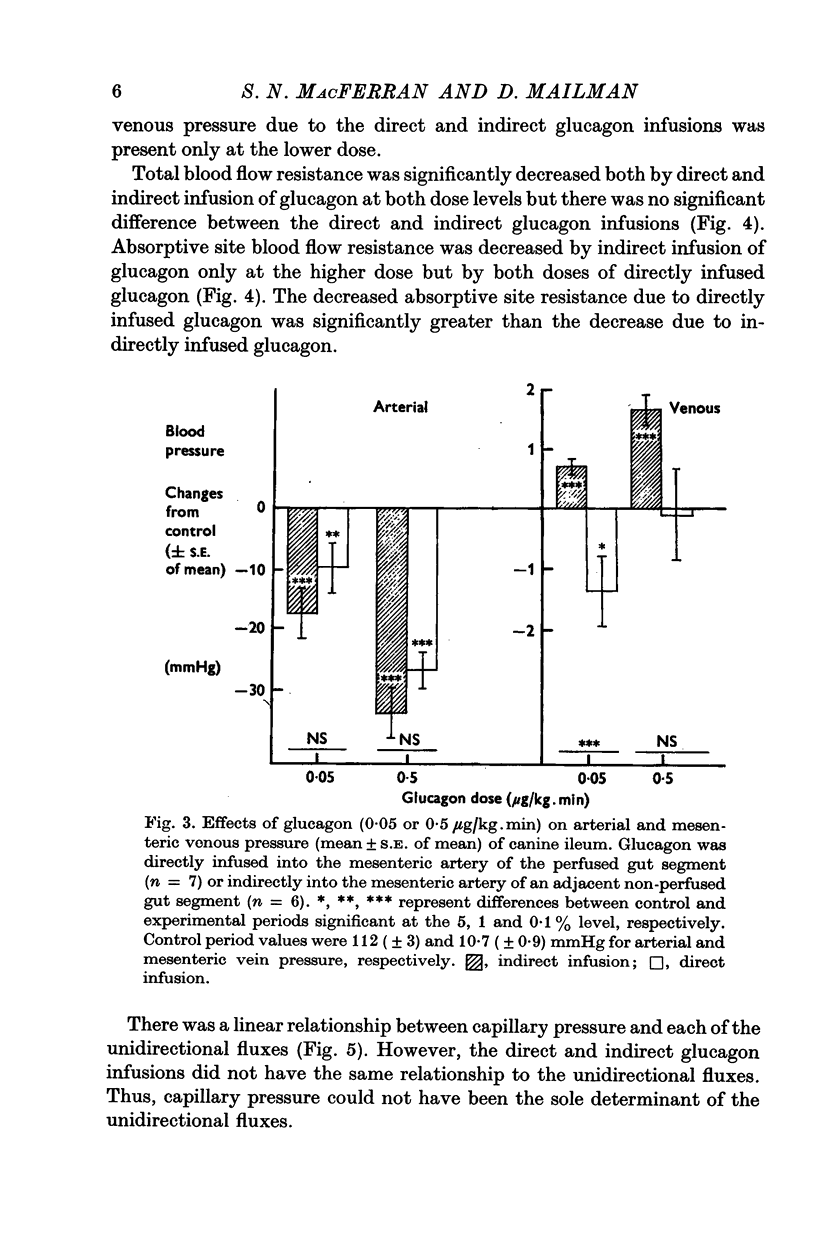
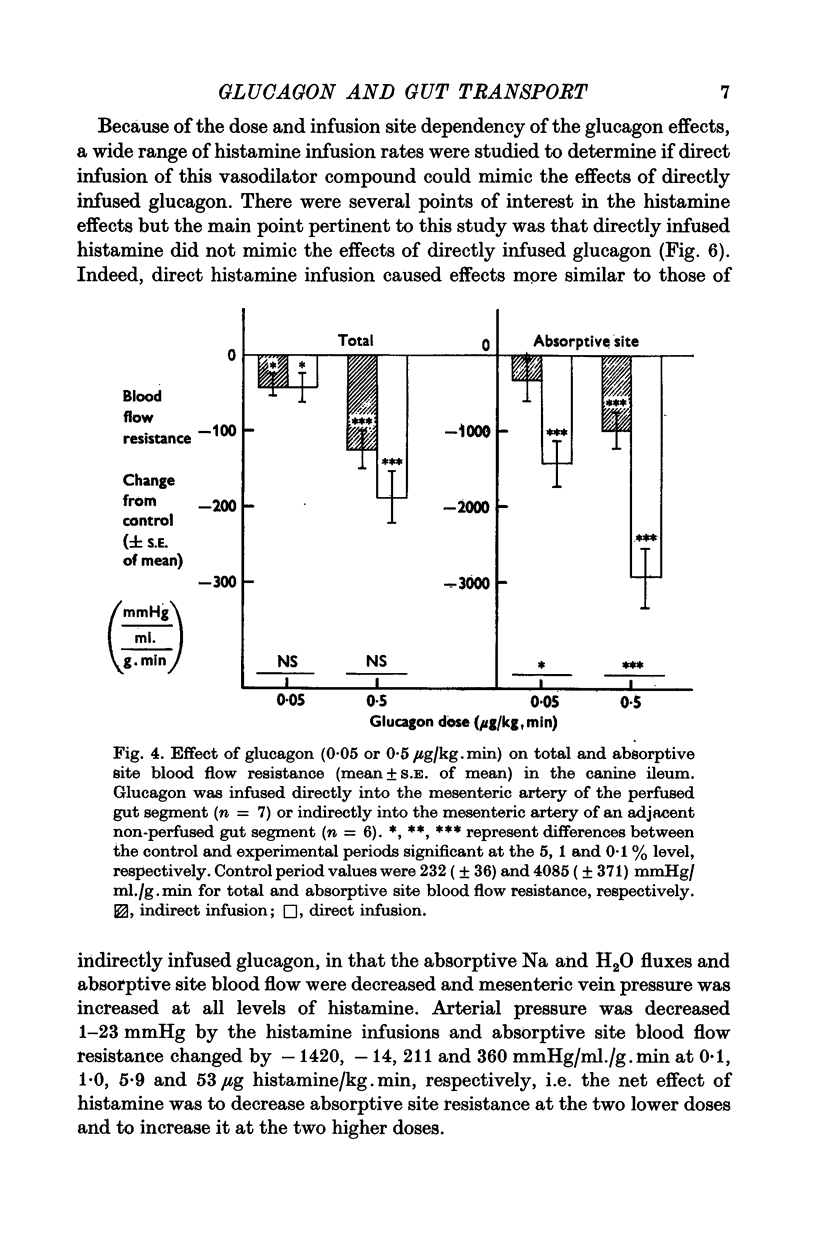
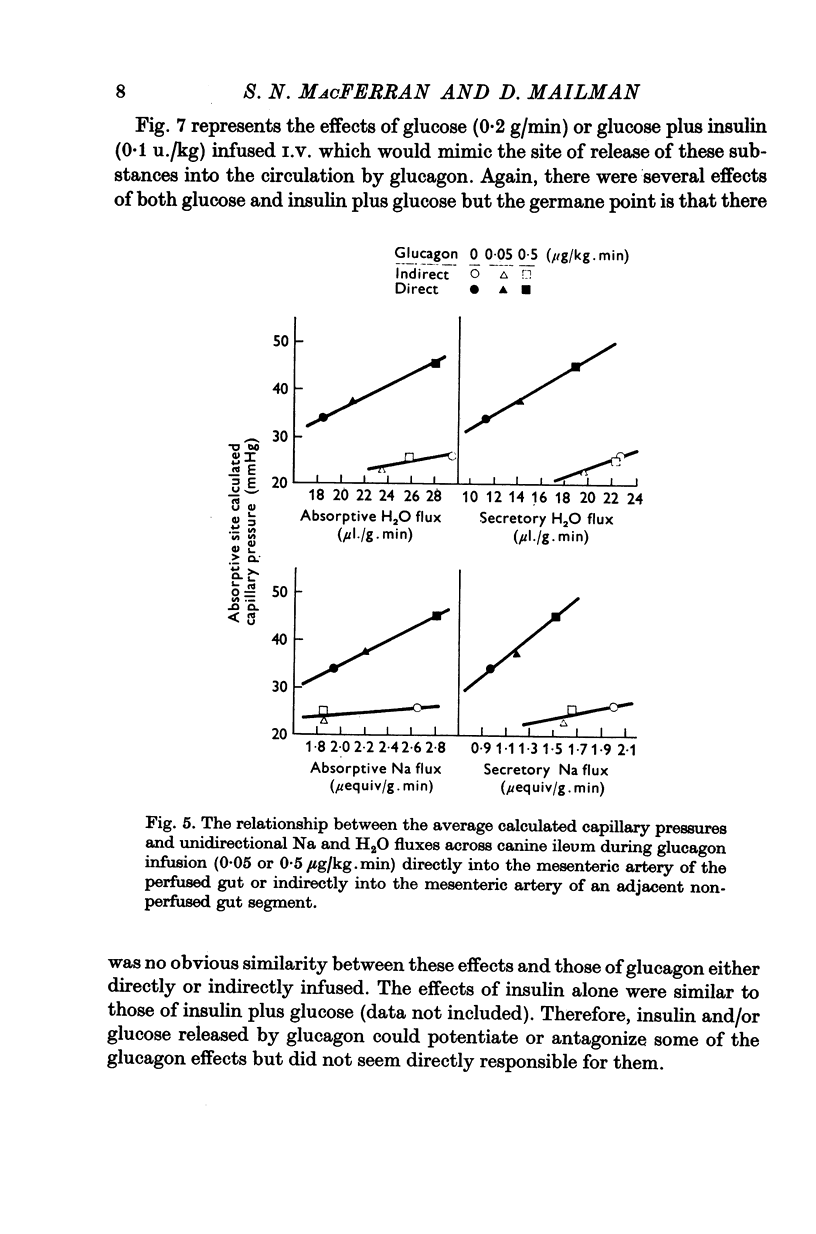
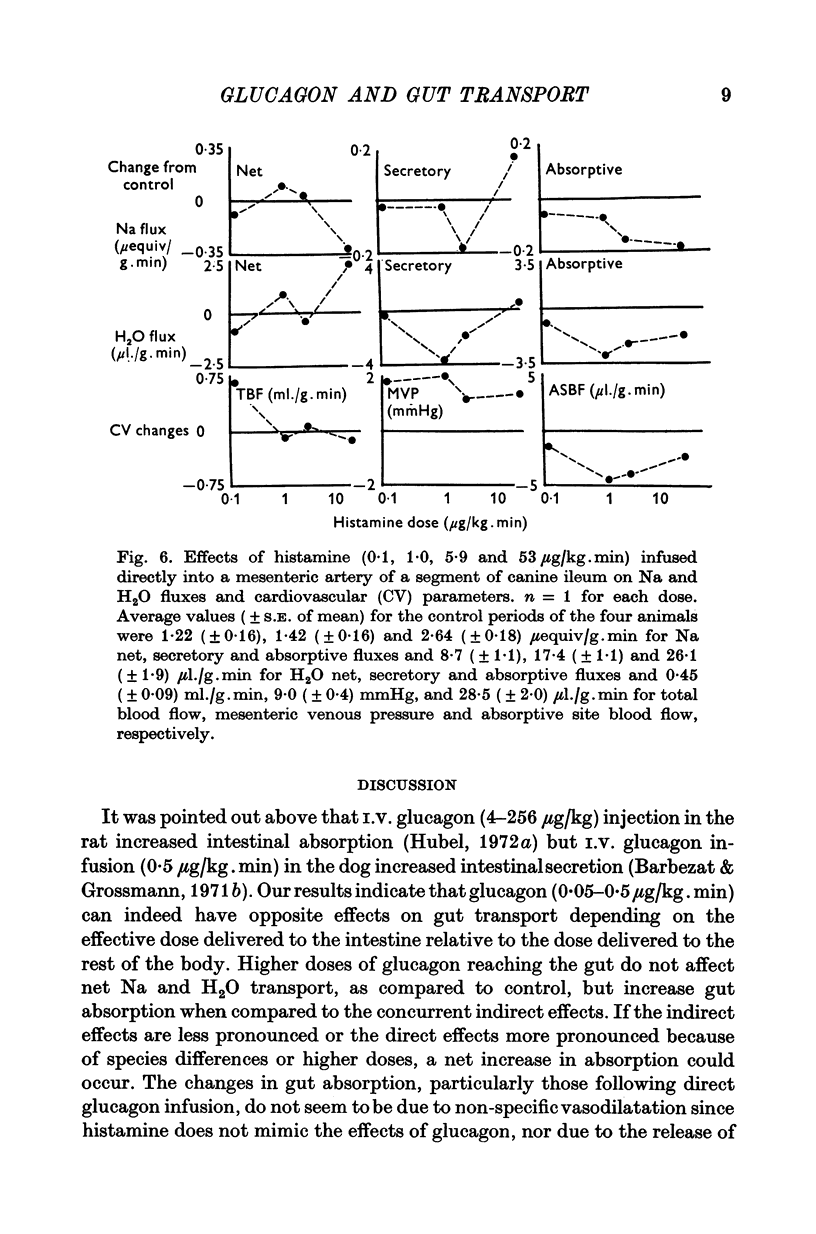
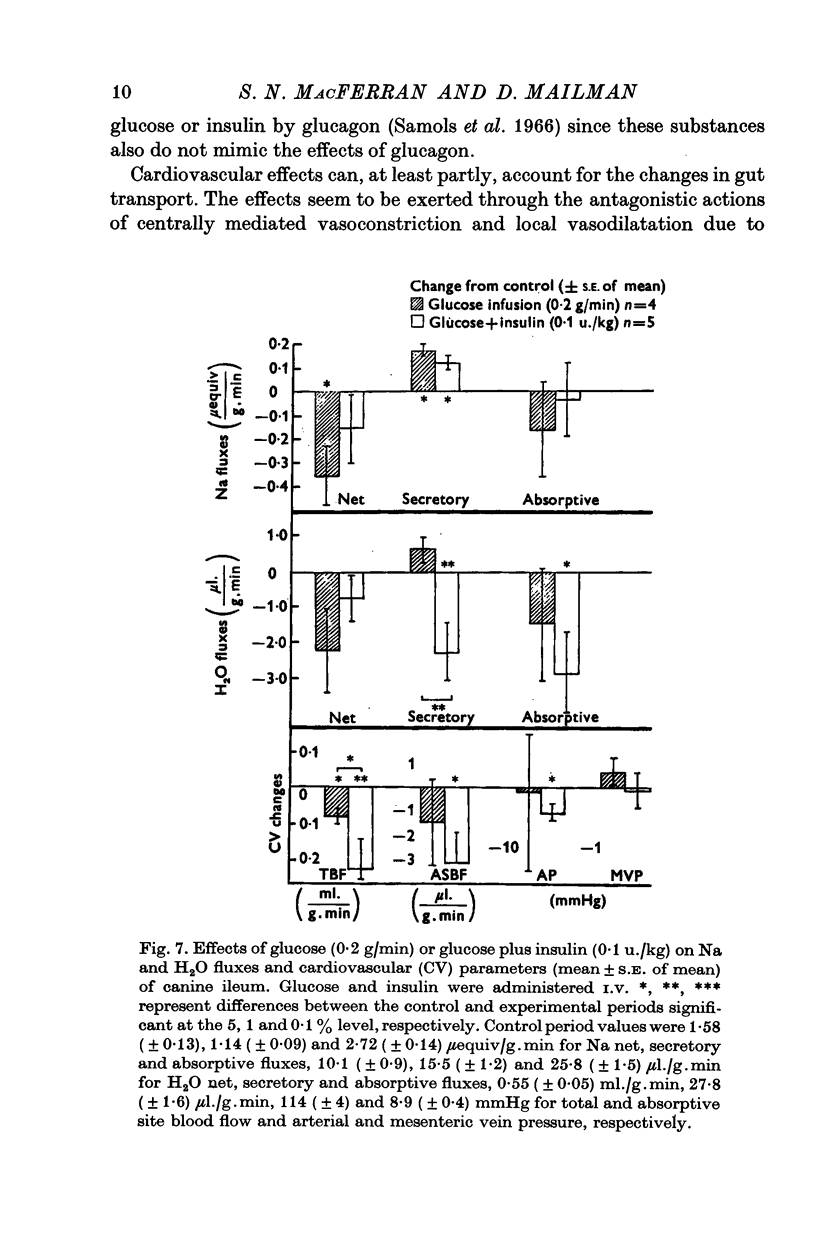
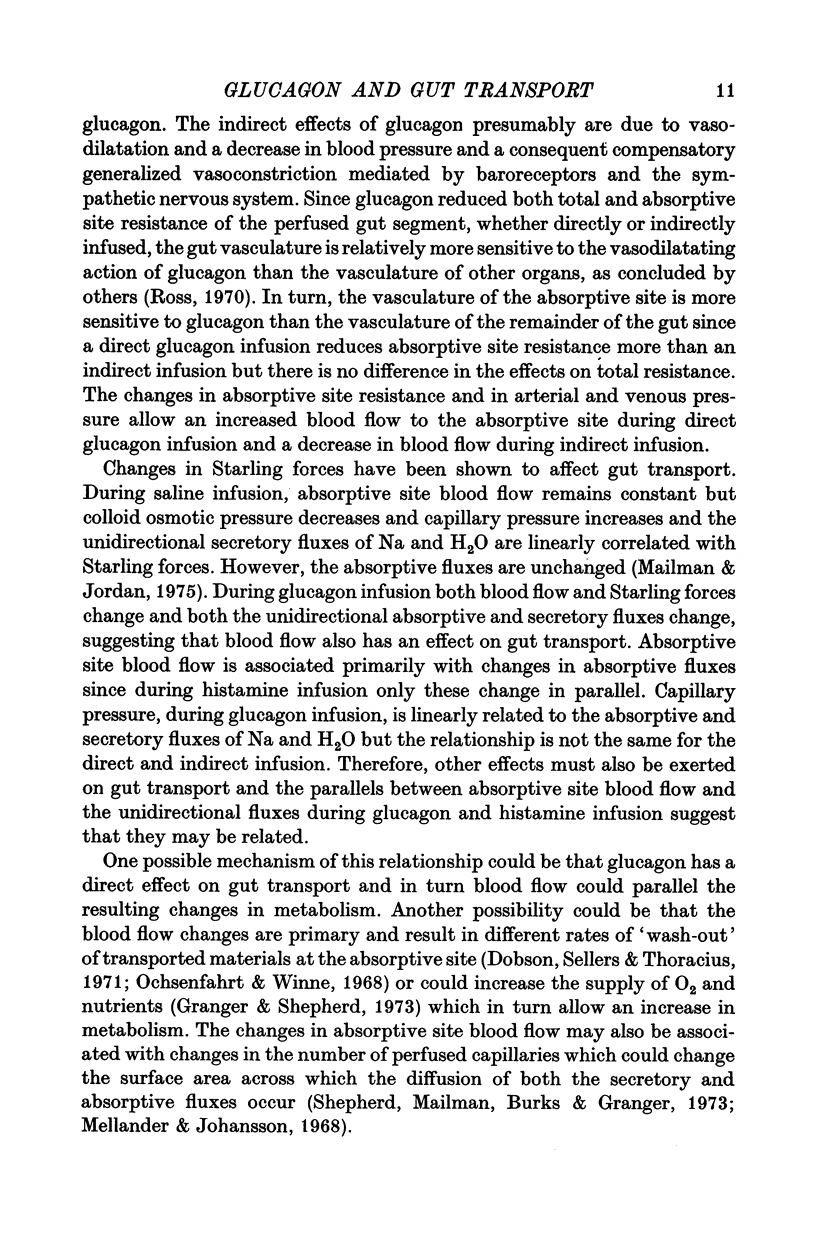
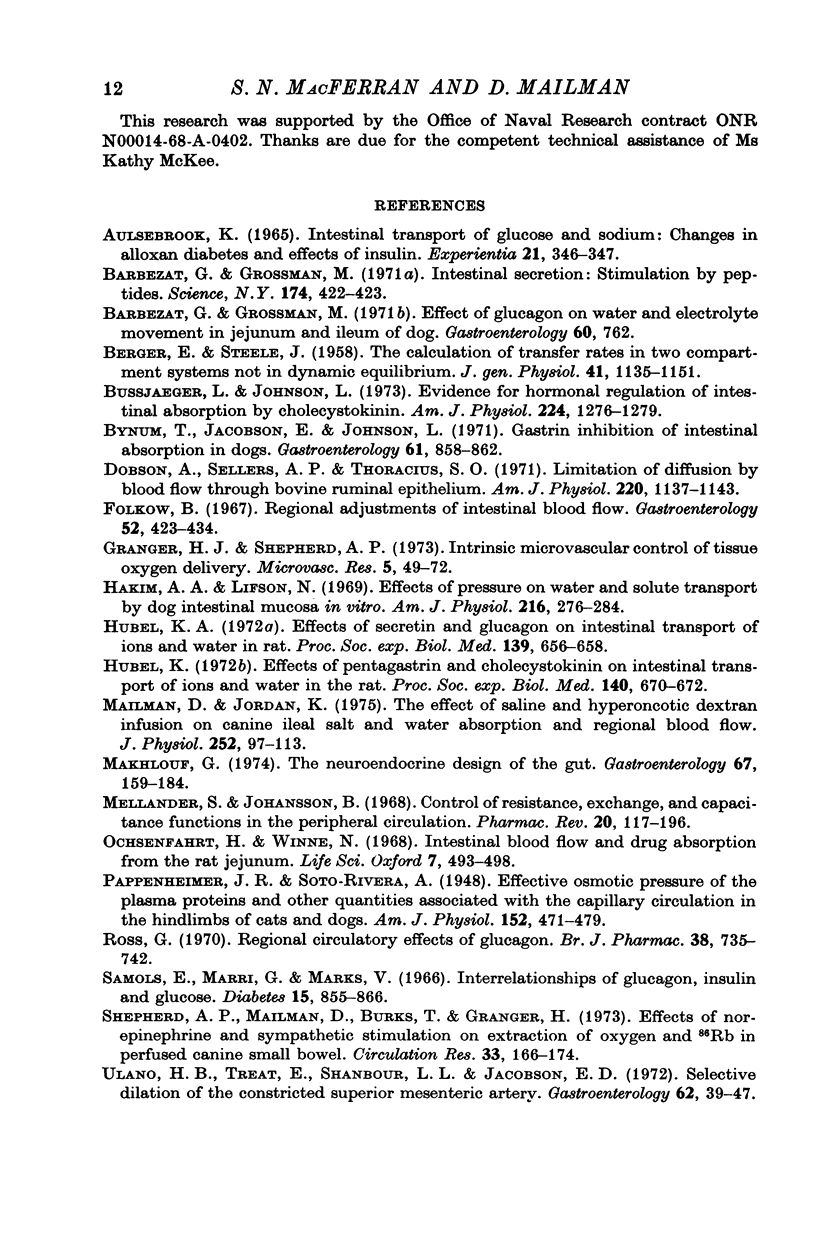
Selected References
These references are in PubMed. This may not be the complete list of references from this article.
- Aoki N., Von Kaulla K. N. Human serum plasminogen antiactivator: its distinction from antiplasmin. Am J Physiol. 1971 Apr;220(4):1137–1145. doi: 10.1152/ajplegacy.1971.220.4.1137. [DOI] [PubMed] [Google Scholar]
- Aulsebrook K. A. Intestinal transport of glucose and sodium: changes in alloxan diabetes and effects of insulin. Experientia. 1965 Jun 15;21(6):346–347. doi: 10.1007/BF02144708. [DOI] [PubMed] [Google Scholar]
- BERGER E. Y., STEELE J. M. The calculation of transfer rates in two compartment systems not in dynamic equilibrium. J Gen Physiol. 1958 Jul 20;41(6):1135–1152. doi: 10.1085/jgp.41.6.1135. [DOI] [PMC free article] [PubMed] [Google Scholar]
- Barbezat G. O., Grossman M. I. Intestinal secretion: stimulation by peptides. Science. 1971 Oct 22;174(4007):422–424. doi: 10.1126/science.174.4007.422. [DOI] [PubMed] [Google Scholar]
- Bussjaeger L. J., Johnson L. R. Evidence for hormonal regulation of intestinal absorption by cholecystokinin. Am J Physiol. 1973 Jun;224(6):1276–1279. doi: 10.1152/ajplegacy.1973.224.6.1276. [DOI] [PubMed] [Google Scholar]
- Bynum T. E., Jacobson E. D., Johnson L. R. Gastrin inhibition of intestinal absorption in dogs. Gastroenterology. 1971 Dec;61(6):858–862. [PubMed] [Google Scholar]
- Folkow B. Regional adjustments of intestinal blood flow. Gastroenterology. 1967 Feb;52(2):423–432. [PubMed] [Google Scholar]
- Granger H. J., Shepherd A. P., Jr Intrinsic microvascular control of tissue oxygen delivery. Microvasc Res. 1973 Jan;5(1):49–72. doi: 10.1016/s0026-2862(73)80006-8. [DOI] [PubMed] [Google Scholar]
- Hakim A. A., Lifson N. Effects of pressure on water and solute transport by dog intestinal mucosa in vitro. Am J Physiol. 1969 Feb;216(2):276–284. doi: 10.1152/ajplegacy.1969.216.2.276. [DOI] [PubMed] [Google Scholar]
- Hubel K. A. Effects of secretin and glucagon on intestinal transport of ions and water in the rat. Proc Soc Exp Biol Med. 1972 Feb;139(2):656–658. doi: 10.3181/00379727-139-36208. [DOI] [PubMed] [Google Scholar]
- Mailman D., Jordan K. The effect of saline and hyperoncotic dextran infusion on canine ileal salt and water absorption and regional blood flow. J Physiol. 1975 Oct;252(1):97–113. doi: 10.1113/jphysiol.1975.sp011136. [DOI] [PMC free article] [PubMed] [Google Scholar]
- Makhlouf G. M. The neuroendocrine design of the gut. The play of chemicals in a chemical playground. Gastroenterology. 1974 Jul;67(1):159–184. [PubMed] [Google Scholar]
- Mellander S., Johansson B. Control of resistance, exchange, and capacitance functions in the peripheral circulation. Pharmacol Rev. 1968 Sep;20(3):117–196. [PubMed] [Google Scholar]
- Ochsenfahrt H., Winne D. Intestinal blood flow and drug absorption from the rat jejunum. Life Sci. 1968 May 1;7(9):493–498. doi: 10.1016/0024-3205(68)90052-0. [DOI] [PubMed] [Google Scholar]
- Ross G. Regional circulatory effects of pancreatic glucagon. Br J Pharmacol. 1970 Apr;38(4):735–742. doi: 10.1111/j.1476-5381.1970.tb09882.x. [DOI] [PMC free article] [PubMed] [Google Scholar]
- Samols E., Marri G., Marks V. Interrelationship of glucagon, insulin and glucose. The insulinogenic effect of glucagon. Diabetes. 1966 Dec;15(12):855–866. doi: 10.2337/diab.15.12.855. [DOI] [PubMed] [Google Scholar]
- Shepherd A. P., Mailman D., Burks T. F., Granger H. J. Effects of norepinephrine and sympathetic stimulation on extraction of oxygen and 86Rb in perfused canine small bowel. Circ Res. 1973 Aug;33(2):166–174. doi: 10.1161/01.res.33.2.166. [DOI] [PubMed] [Google Scholar]
- Ulano H. B., Treat E., Shanbour L. L., Jacobson E. D. Selective dilation of the constricted superior mesenteric artery. Gastroenterology. 1972 Jan;62(1):39–47. [PubMed] [Google Scholar]


